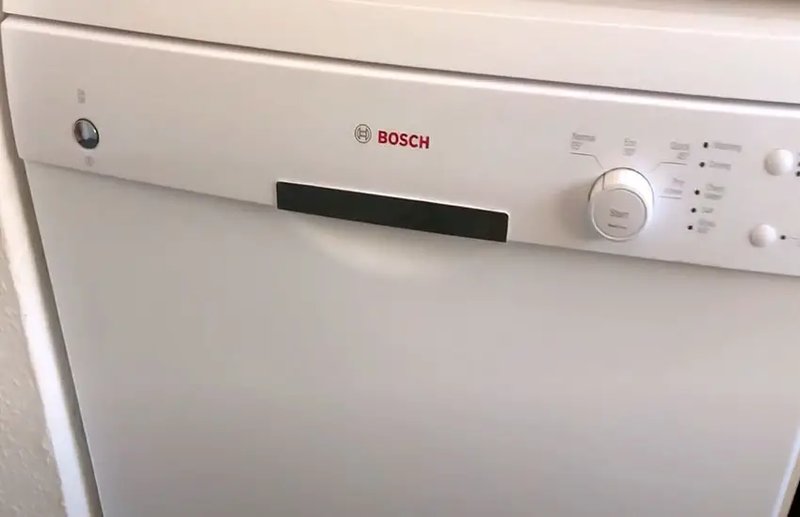
Imagine your dishwasher as a small ecosystem — everything’s got to work together, kind of like how a band needs all its members in sync to play a great tune. When one part of the dishwasher, like the drainage system, isn’t working properly, it’s like the drummer missing a beat. The error code OE is your dishwasher’s way of telling you, “Hey, something’s not right with how I’m draining.” But don’t worry, understanding and fixing this issue might be easier than you think.
Understanding the OE Error Code
The Bosch dishwasher’s OE error is primarily focused on drainage problems. Essentially, when water isn’t draining out as it should, the dishwasher alerts you with this code. It’s like having a blocked pipe in your house — when water doesn’t flow out, it’s often due to some blockage or a malfunction in the drainage system itself.
First, consider that dishwashers use a series of components to pump out water. If any of these parts fail, you might see that pesky OE error. It could be a kinked drainage hose, which is similar to bending a garden hose, causing water to stop mid-flow. Also, there might be more serious issues, like a failing pump motor, which is like a car’s engine not turning over — nothing’s moving unless it’s fixed.
Moreover, sometimes the problem is surprisingly simple. Large food particles or debris from your dishes can sometimes get caught in the filter or drain pump, much like how leaves can block a gutter. This blockage stops water from moving out of the dishwasher, triggering that OE error.
Checking for Blockages and Debris
Let’s start with what might be one of the most common culprits: blockages and debris. Think of your dishwasher like a busy road at rush hour; if there’s an accident or stalled car, traffic gets backed up. Similarly, food scraps, broken glass, or even paper labels from jars can get lodged in the drain, creating a veritable traffic jam for water.
To tackle this issue, you’ll want to first inspect the filter. Usually located at the bottom of the dishwasher, it’s meant to catch bigger unwanted particles — but when it gets too full, water can’t drain. Cleaning this out every so often is like taking out the trash; it’s not glamorous, but oh so necessary.
The drain hose is another spot to check. If it’s kinked or blocked, it’s like trying to funnel water through a bent straw. Straighten it out and ensure there’s nothing inside blocking the flow. Regular maintenance here can prevent future OE errors, ensuring your dishwasher remains as efficient as possible.
Inspecting the Drain Pump
Sometimes, the root of the problem is the drain pump itself. This little component is crucial because it’s responsible for pushing water out of the dishwasher. If it’s malfunctioning, it’s like your dishwasher trying to squeeze toothpaste out of a fully capped tube — a whole lot of effort, but no results.
To see if the pump’s the issue, you might need to dig a little deeper. Unplug the dishwasher and check to see if any obstructions are visible. Sometimes a small piece of food can get stuck in the impeller, the small fan-like part, leaving it unable to spin or move water out.
Should the pump be failing entirely, it might need replacing. While this sounds daunting, it’s akin to swapping out a battery in a toy; a new one can get things moving smoothly again. It’s worth noting, though, that if you’re not comfortable fiddling around here, calling a professional might be the best course of action.
Preventing Future OE Errors
Once you’ve tackled the current issue, it’s all about prevention to keep that OE error from making an unwelcome return. Regular maintenance, like cleaning filters and checking hoses, is crucial. Imagine your dishwasher as a pet; it needs some care and attention to stay happy and healthy.
Also, being mindful of what you load into the dishwasher can help a lot. Rinsing large food particles off plates and bowls can be likened to sweeping before you mop — it makes the whole cleaning process much more effective. And if you’re in the habit of tossing in jars with labels, it might be time to reconsider, as those labels can be villains in disguise, clogging up crucial components.
Lastly, consider scheduling a regular check-up with a professional. Just as we go to the doctor for a health check, a professional can spot issues you might miss and keep your dishwasher in top shape. It might seem like an extra step, but knowing the dishwasher is running smoothly gives you peace of mind, and that’s invaluable.
By understanding and addressing these drainage issues, you can ensure your Bosch dishwasher runs efficiently without those pesky error codes interrupting your day.